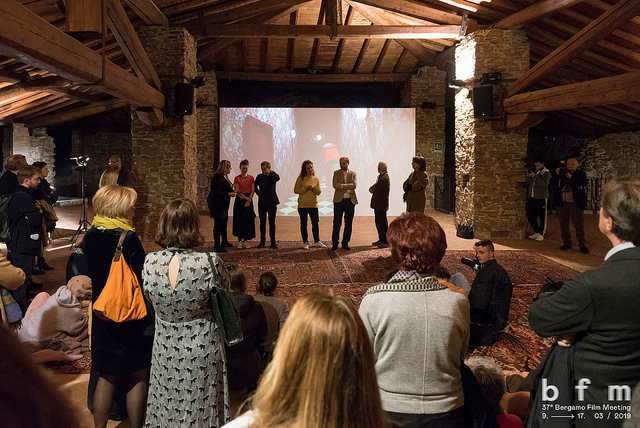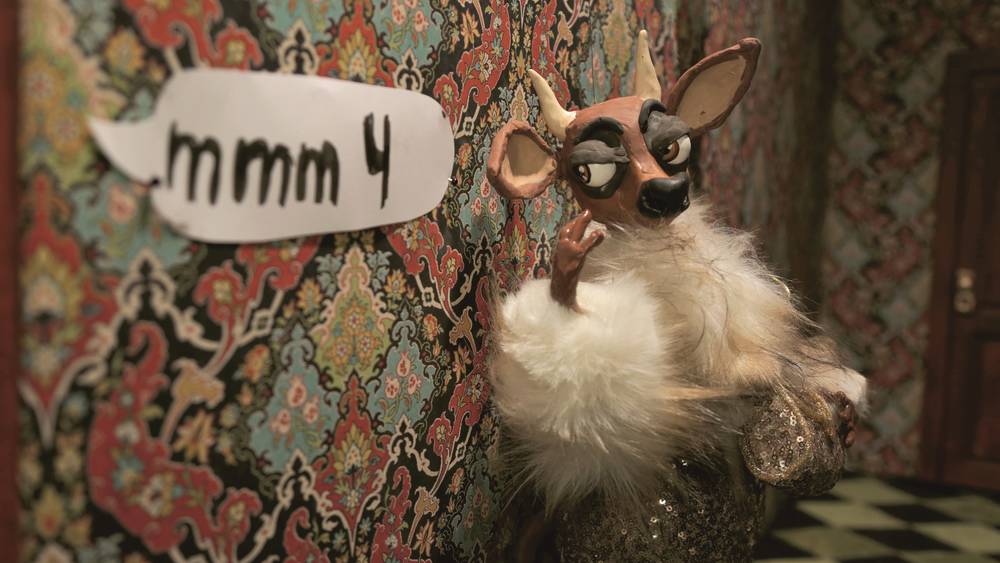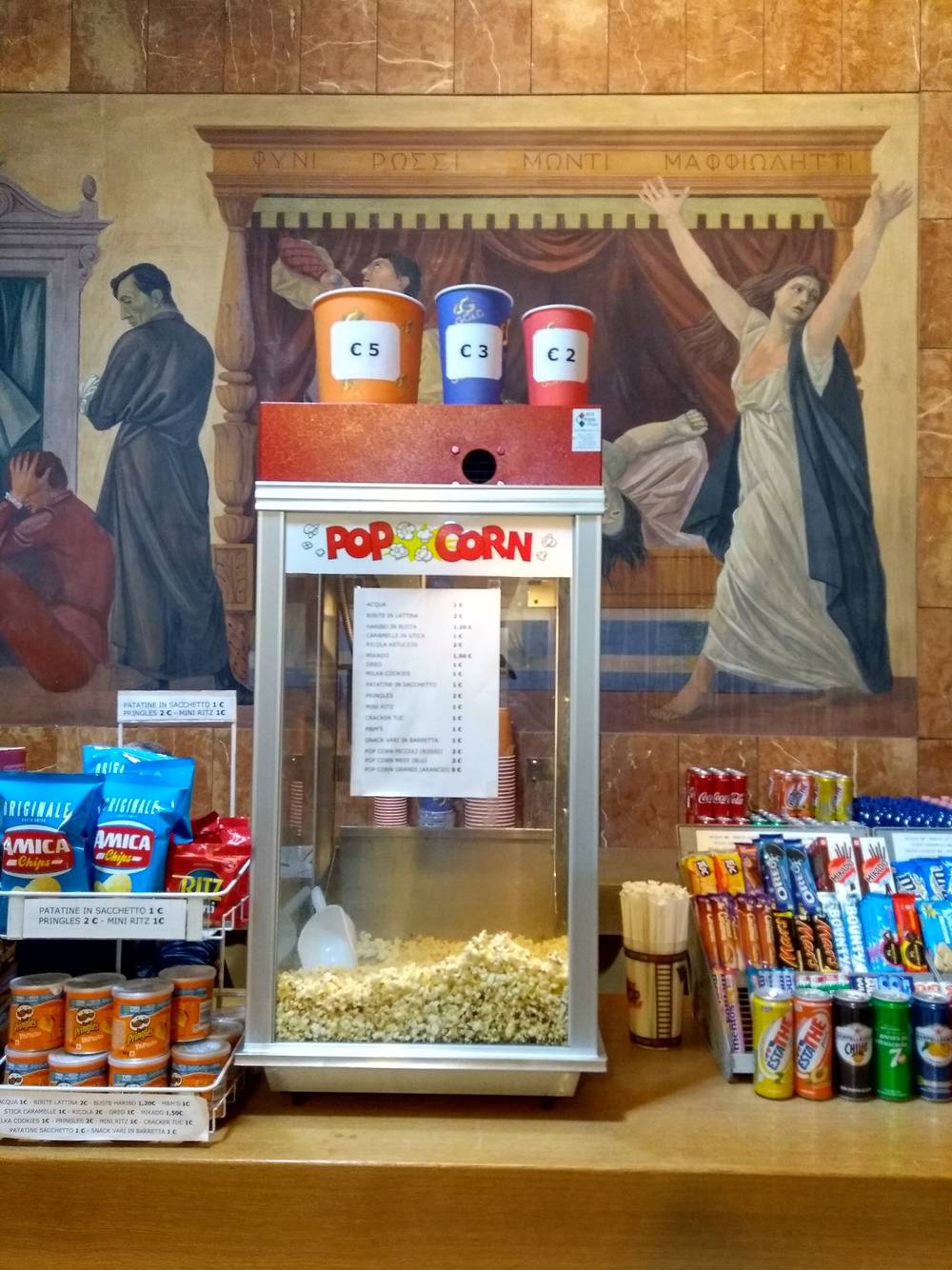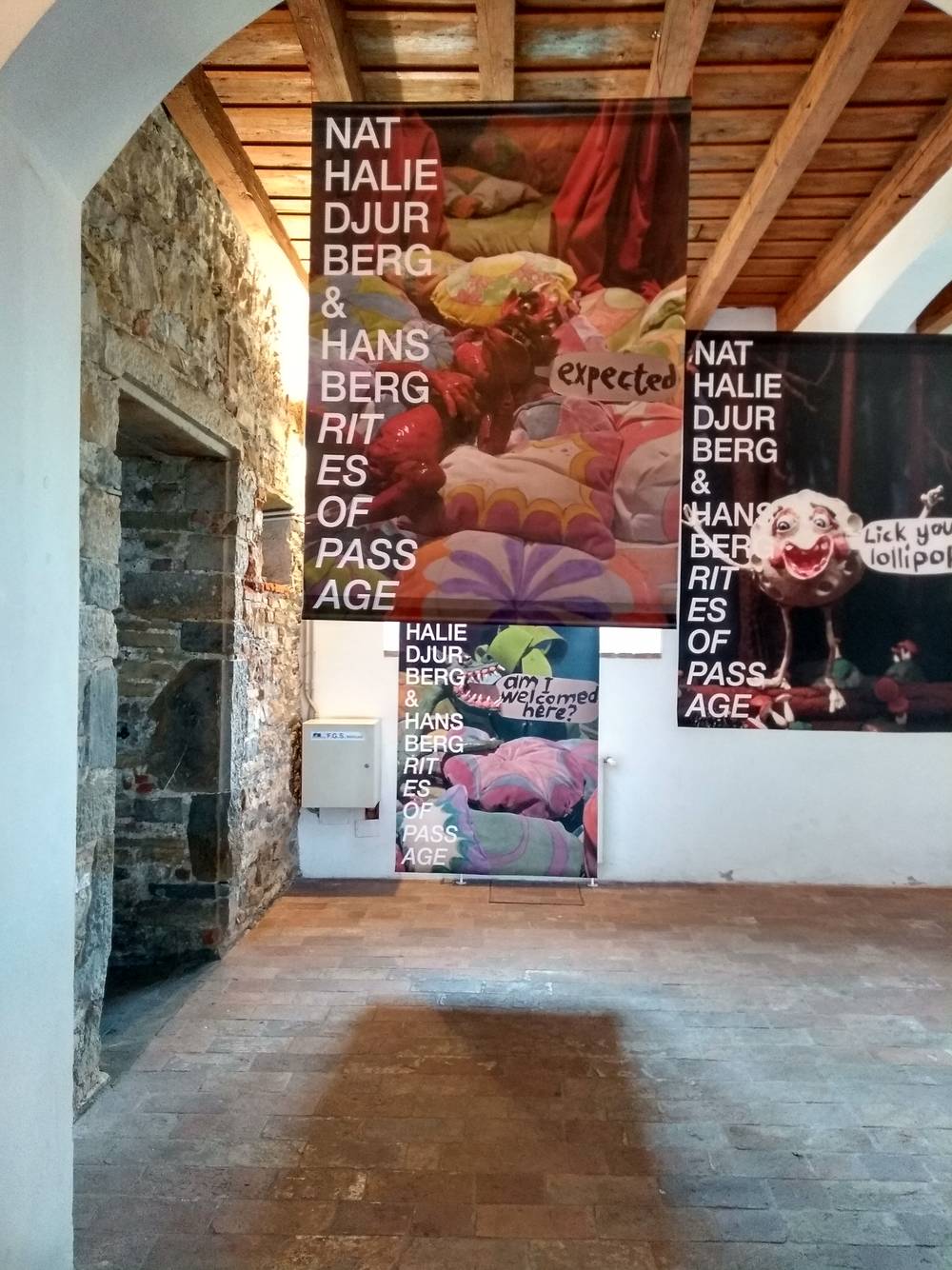A children's nightmare in a medieval fort: The grotesque worlds of Nathalie Djurberg and Hans Berg at the Bergamo Film Meeting.
Grotesque creatures gradually enter a cozily furnished room: Soft piles of pillows are generously spread over the floor, while here and there lie large, gift-wrapped packages gently illuminated with atmospheric light. Timidly almost, the peculiar visitors explore the welcoming space, their appearance seemingly akin to a child’s nightmare: “Am I allowed to step on this nice carpet?” asks one cautiously. “Am I welcome here?” asks another. Or even: “Are bad words admitted?”
In Nathalie Djurberg’s and Hans Berg’s “Am I Allowed To Step On This Nice Carpet” (2018), the comforting ambiance that the abhorrent creatures indulge in is so profoundly affecting that it quite literally penetrates to the bone – with the physical and emotional caress and comfort of the homely surroundings, of the soft pillows, with the ecstatic pleasure of those yet unknown possibilities – until at the end, only the skeletons of the protagonists remain.
We are located on the upper floor of a medieval fort
If the viewer now mentally zooms away from the fluffy room and beyond the screen, he will find himself in another cozy setting – a kind of alpine chalet perhaps, with wood on the ceiling and stone protrusions on the walls. This, in fact, is not the classic “white cube” in which Nathalie Djurberg’s glaringly dark Plasticine worlds move across the screen to compositions by Hans Berg: Rather, we find ourselves on the upper floor of a medieval fort in the north Italian city of Bergamo, which once formed the gateway to the old town, the Città Alta. These days, motorbikes and cars make their way from top to bottom and back through the arches of the gateway with its meter-thick stone walls, of which certain elements still project into the exhibition space. That’s Italy: It’s hard to avoid tripping over centuries-old history at every step.

Nathalie Djurberg & Hans Berg, Am I Allowed to Step On This Nice Carpet, 2018 © VG-Bild Kunst, Bonn, Image via cloudinary.com

And nevertheless, at least this choice of location was not a given, as Stefan Raimondi explains. He works as co-curator for the art film program known as the Bergamo Film Meeting, which is being held this year for the 37th time in the north Italian city. Alongside retrospectives like that of Nouvelle Vague acting legend Jean-Pierre Léaud, or feature films on this year’s theme “Europe,” the film festival presents traditional and experimental formats alike –for example films by Jan Švankmajer, an old hand at animation from the Czech Republic, or Polish animated filmmaker Mariusz Wilczyński.
It’s not a typical historical venue that would otherwise serve for cultural events.
On the hunt for a suitable location for the “claymation” works by Djurberg and Berg, three of which will feature in the exhibition context and another three screened in the cinema, the team ultimately came across this space. Raimondi explains how the great hall in the medieval fort remains unused for much of the year. “It’s not a typical historical venue that would otherwise serve for cultural events.” He personally raves about the “slightly gruesome charm” of the structure, which seems to devour its visitors – multiple steps lead up to the gloomy hall, in which visitors can sit or lie on thick Persian carpets to watch the videos by the Swedish artist duo, namely the abovementioned work alongside “Dark Side Of The Moon” and “One Need Not Be A House, The Brain Has Corridors,” both of which are currently also on view at the SCHIRN.
There is popcorn against a backdrop of historical murals
Cut to the Cinema San Marco, one kilometer down the hill as the crow flies. In the new old town the architecture becomes a little more eclectic – ranging from the usual Italian mix of marble and aluminum to the foyer of the cinema, where popcorn is sold against a backdrop of historical murals. Inside, three films, all chosen by Hans Berg, are showing on the screen. What changes here, aside from the quality of the projection, is the audience’s perspective.


While, on the one hand, the cinema screen can boost images into a more powerful format, and it takes quite some effort to leave the room before the screening ends (while in many exhibitions there is a constant coming and going that usually makes it hard to watch a film all the way through), at the same time the setting of the cinema triggers less awe and reverence than the average “white cube.”
At least that’s what is suggested in the feedback, where Nathalie Djurberg and Hans Berg give a Q&A after the film program. One older man in the audience is full of praise: He raves about a work with a walrus and Inuit, which he particularly enjoyed. The films shown here are impressive too, he says, although he adds: “I hope you will make more beautiful things in the future.” Nathalie Djurberg has to laugh. “You’re like my mother!” the artist says, explaining that she would like to cater to the wishes of her mother and the audience member with more beautiful faces and images, but that she can do nothing other than what comes into her head. Where exactly these ideas come from, however, she does not know.
I hope you will make more beautiful things in the future.
This world of ideas that Djurberg, by her own admission, pursues obsessively, leads directly to the dark world of the repressed: the exposure of sexual desires and hidden longings, the acting out of socially sanctioned obsessions. Tracing these desires is reminiscent of a psychoanalytical process, although what is depicted, as disturbing as it might be, is never morally evaluated within the work. None of the creatures eyes any of the others disparagingly as they go about their business, and none of them are met with astonishment or judgement (which is inevitably left up to us as the audience instead). When does an action become a breach of taboo? What is still considered normal among children is thought as perversion in adults, Djurberg explains.

Nathalie Djurberg & Hans Berg, Rites of Passage, Ausstellungsansicht © VG-Bild Kunst, Bonn, Image via www.bergamofilmmeeting.it
Can an action inherently be taboo, or does it merely become so through those who carry it out? The complexity of this question is involuntarily demonstrated by the peculiar protagonists of “Am I Allowed To Step On This Nice Carpet” too, as they simply can’t comprehend that they are permitted to step on the eponymous “nice carpet” and to indulge in it appreciatively.
One more question: Do the pair not sometimes want to address a broader audience, like here in the cinema? “Not so in this specifically artistic scene?” Another friendly, yet determined objection from Nathalie Djurberg: “Once the works leave the studio, anyone can view them.” And, perhaps even more importantly, anyone can interpret them independently – she as the artist does not have interpretational sovereignty. And this is as true as it is banal: The exhibition is fundamentally just as open to everyone and anyone as the cinema.










